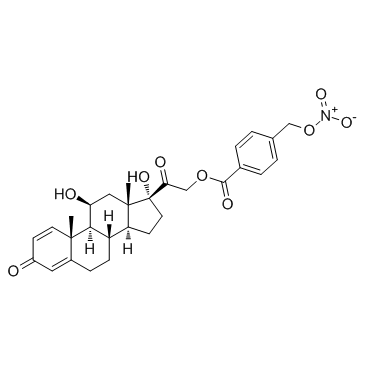NO-prednisolone price
Total count: 1Updated Date: 2024-02-29 13:24:39
NO-prednisolone
- CAS Number: 327610-87-7
- Molecular Formula: C29H33NO9
- Molecular Weight: 539.574
Price(reference only):
-
$240/1mg
-
$480/5mg
-
$816/10mg
-
$1440/20mg
